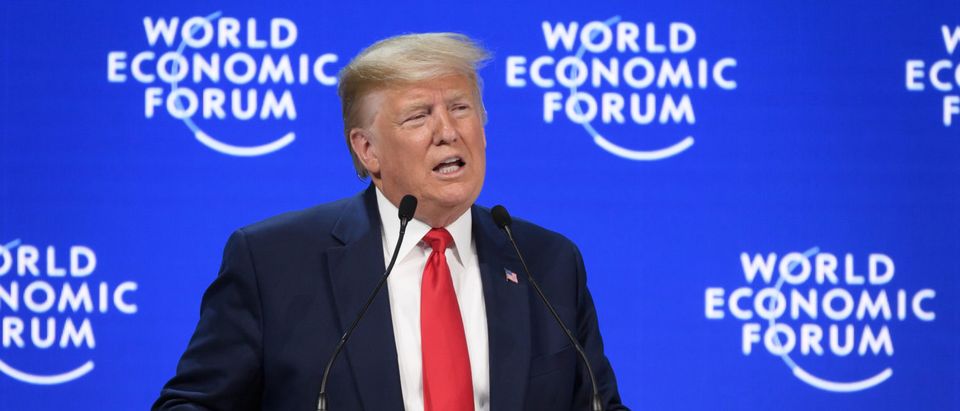Medicare for All? Forget it.
Free college? Forget it.
The Green New Deal? Forget it.
Each of these progressive priorities is now unaffordable. The massive monetary and fiscal responses to the coronavirus pandemic mean that the U.S. economy is fundamentally tapped out when it comes to major new spending.
The overall U.S. economic response to the pandemic is following three phases: (1) do “whatever it takes” to prevent an economic and financial meltdown, (2) determine how best to resume economic activity without risking renewed infections, and (3) sort out afterwards how to pay for the unprecedented levels of stimulus.
When the pandemic struck, the U.S. had already experienced a decade of artificially low interest rates. After minimal inflation, real interest rates were effectively at zero and at times ventured into negative territory.
While the Federal Reserve engineered these low rates to sustain the post-Great Recession economy, the long-term effect was to impede real asset-price discovery. The resulting global search for higher yield distorted markets ranging from equities and housing to cruise ship and aircraft construction. We already were seeing asset bubbles emerge as a result of massive overbuilding and overcapacity.
We were returning to trillion-dollar annual budget deficits before “shelter in place” became a widespread reality. And the last time we heard talk about “bending the curve,” the topic was reducing overall health care costs, not reducing infection and mortality rates from a deadly global pathogen.
When the bidding is over, Congress will have increased this year’s budget deficit by close to $4 trillion, and the Fed’s balance sheet may balloon to $9 trillion, approximately double its balance sheet expansion after the Great Recession.
In the coming months, “unwinding” will take center stage. How, and over what period of time, will the Fed unwind its bloated balance sheet? How will the country unwind this unprecedented expansion of the national debt?
Austerity is not the issue. We need to begin confronting now what our world will look like once the congressional spending and Fed-sponsored liquidity end. The president promises a quick, V-shaped economic bounce-back, and many observers assume (or hope) that stock-market valuations and consumer spending will promptly return to their February 12, 2020, levels.
That’s not going to happen anytime soon. We need to start planning now for that slow recovery, because what we’re experiencing globally is, perhaps, the greatest instance of creative destruction since the Great Depression.
The good times and half-century-low unemployment rates resulted from easy money and deficit spending. To combat the coronavirus pandemic, the country has now doubled down on both excesses. It cannot do so forever.
We will ultimately rebuild and rebound as a nation, but as we do, there will be significant shakeouts along the way in several overbuilt sectors of our economy. The Congress and the Fed will be unable to keep spending or providing sufficient liquidity to prevent these shakeouts from occurring.
The key metric to track is the return of strong consumer demand. When will customers start booking cruises again? Would you do that any time in the near future?
Will retailers like J.C. Penney, Macy’s, Neiman Marcus, and others in similar shape reorganize through bankruptcy, or just disappear from the marketplace altogether?
When will restaurants return to their previous capacity? What about the energy sector?
Flying, sailing, shopping, and dining out all involve people being in relatively close proximity to each other.
Even segments of the nonprofit sector that have experienced similar types of overbuilding relative to available funding will not be immune. Consider one area: the plethora of good-government groups promoting stronger democratic institutions, money-in-politics reforms, and election security. Many of these organizations do excellent work. The issue is whether there’s enough money to support all of them.
Our nonprofit colleges and universities also have overcapacity. We can expect to see a shakeout in the higher-education sector, too.
And what about our terribly overbuilt financial services sector? Will these institutions learn anything this time?
Priorities from six months ago will change. Many worthy initiatives will be effectively postponed or crowded out. Consumers, whose spending priorities are being radically reoriented, will likely be shell-shocked for a long time. Spending more at many levels, public and private, will not be an option.
Today’s pandemic, like World War II, will drive many structural changes as well as upend our national spending and priority-setting. When the presidential campaigns resume, Trump and Biden should tell us precisely how they plan to address our new realities.
Charles Kolb served as Deputy Assistant to the President for Domestic Policy from 1990-1992 in the George H.W. Bush White House.


